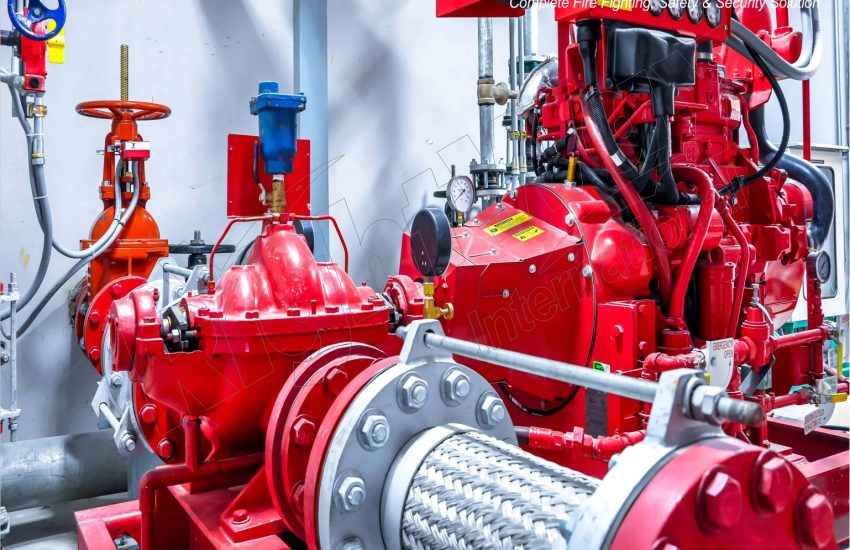Fire safety is critical in any building, whether residential, commercial, or industrial. One of the most effective ways to protect against fire is by installing a fire safety sprinkler system. This life-saving solution automatically activates when a fire is detected, helping minimize damage and protect occupants. In this guide, we’ll cover the importance of fire sprinkler systems, how they work, the different types available, installation steps, and maintenance tips—all while incorporating key fire protection terms for SEO optimization.
What Is a Fire Safety Sprinkler System?
A fire sprinkler system consists of a network of pipes installed throughout the building. Sprinkler heads release water or other fire-suppressing agents when they detect a fire. Sprinkler systems help control or extinguish fires at an early stage, reducing the risk of injury and property damage. In addition to water-based systems, there are dry, pre-action, and deluge sprinklers that use agents like foam or gas for fire suppression.
How Do Fire Sprinkler Systems Work?
Fire sprinkler systems are activated by heat. The system consists of pipes connected to sprinkler heads placed throughout the building. Each head contains a heat-sensitive element (like a glass bulb) that bursts when exposed to high temperatures. This action releases water or other extinguishing agents.
When a fire occurs, the sprinkler head nearest to the flames activates first. Contrary to what you might see in movies, not all sprinklers go off at once. Only the sprinkler heads directly affected by heat will activate, ensuring minimal water damage and effective fire control.
Types of Fire Safety Sprinkler Systems
Different sprinkler systems suit different building types and fire protection needs. Here are some of the most common types:
- Wet Pipe Sprinkler System: This is the most common type. Water is always in the pipes, ready to be released when a fire occurs.
- Dry Pipe Sprinkler System: Ideal for colder climates, this system contains air or nitrogen in the pipes. Water is released only when a sprinkler head is triggered.
- Pre-Action Sprinkler System: A combination of wet and dry systems. Water remains in the pipes until a two-step process activates it.
- Deluge Sprinkler System: Used in high-risk areas like chemical plants, this system has open sprinkler heads. It releases large volumes of water when activated.
- Residential Sprinkler System: A smaller, more compact version of commercial systems. These sprinklers offer essential protection for homes and small buildings.
Benefits of Installing a Fire Sprinkler System
Here are some key reasons to install a fire sprinkler system:
- Life Safety: Fire sprinklers respond immediately, increasing the chances of escaping a fire safely.
- Property Protection: Sprinklers control or extinguish fires quickly, reducing damage to property.
- Reduced Insurance Costs: Insurance companies often offer discounts for buildings with fire sprinkler systems due to their effectiveness.
- Code Compliance: Many local building codes require sprinkler systems in new or renovated buildings.
- Peace of Mind: Knowing your property and occupants are protected 24/7 brings peace of mind.
Fire Sprinkler System Installation Process
Installing a fire sprinkler system involves several key steps:
- Assessment and Design: A fire protection engineer assesses the building layout and fire risks to design the most suitable system.
- Choosing the Right System: Based on factors like building type and location, the appropriate system (wet, dry, pre-action, or deluge) is selected.
- Installation: Pipes are installed throughout the building, and sprinkler heads are connected to a water source or fire suppression agent.
- Testing: After installation, the system is tested to ensure proper functionality. This may include pressure testing and activation drills.
- Inspection and Approval: Local fire authorities or building inspectors inspect the system to ensure it meets code requirements.
Fire Sprinkler System Maintenance
To ensure a fire sprinkler system works properly in an emergency, regular maintenance is necessary. Here are some essential tasks:
- Routine Inspections: A fire protection professional should inspect the system regularly.
- Water Pressure Checks: Ensure the system maintains adequate pressure for proper operation.
- Alarm Testing: Test alarm systems, including water flow alarms and supervisory signals.
- Sprinkler Head Cleaning: Clean sprinkler heads periodically to prevent clogs or damage.
- Piping Checks: Inspect pipes for leaks, corrosion, or blockages to maintain system efficiency.
Fire Safety Sprinkler System Costs
The cost of installing a fire sprinkler system depends on factors like building size, sprinkler type, and local labor rates. On average, residential systems cost between $1.50 to $2.00 per square foot, while commercial systems range from $2.00 to $4.00 per square foot.
While the initial cost may seem high, the long-term benefits—such as fire protection, life safety, and insurance savings—make it a worthwhile investment. Many local jurisdictions also offer financial incentives or rebates for businesses and homeowners who install fire sprinkler systems.
Conclusion
A fire safety sprinkler system is a crucial component of modern fire protection. Installing a high-quality system helps protect lives, reduce property damage, and ensure compliance with fire codes. Whether building a new home, renovating an existing structure, or managing a commercial property, investing in a fire sprinkler system provides peace of mind and can lower insurance costs. To get started, work with a certified fire protection professional to design, install, and maintain your fire safety system.


